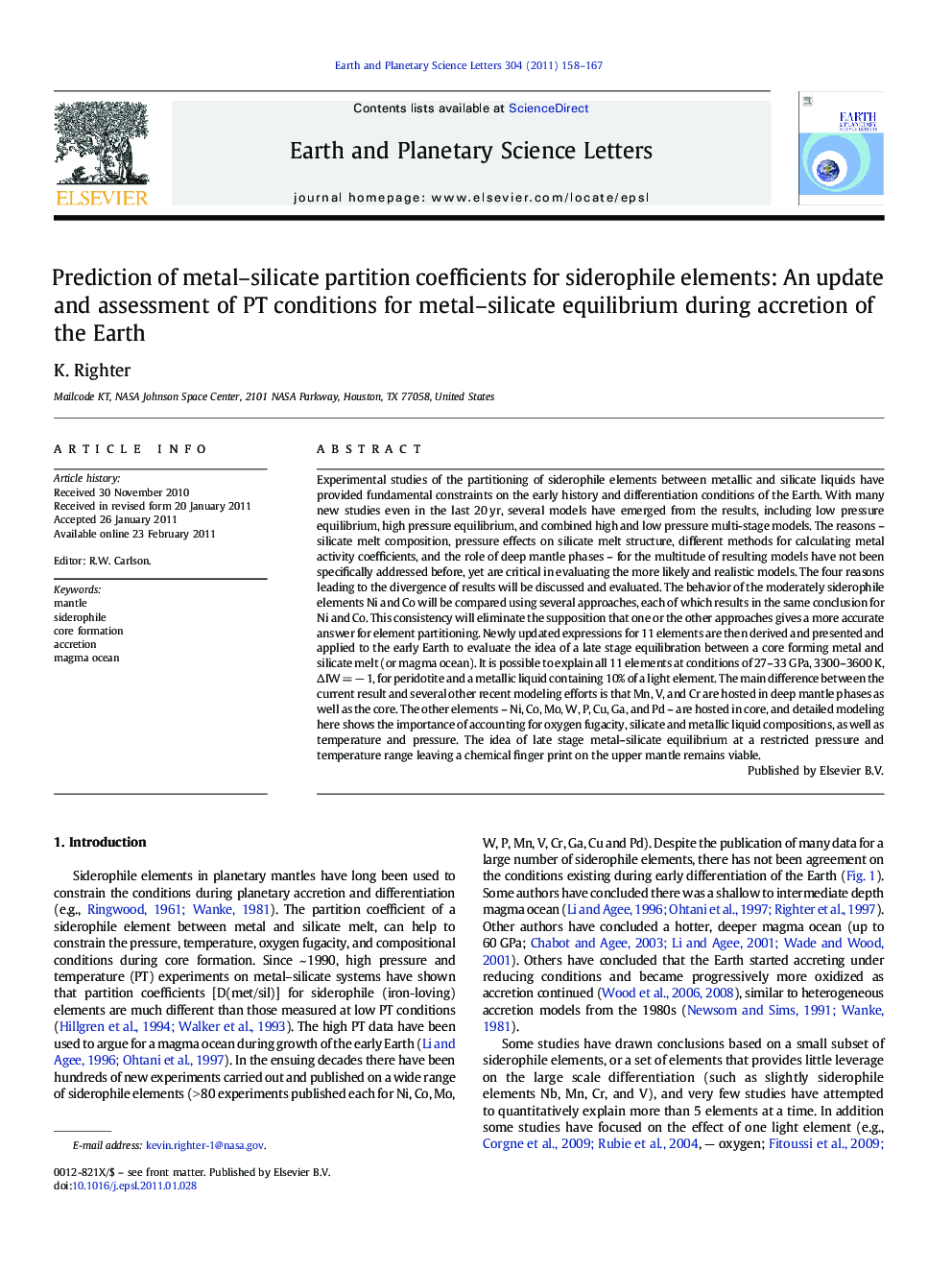| کد مقاله | کد نشریه | سال انتشار | مقاله انگلیسی | نسخه تمام متن |
|---|---|---|---|---|
| 4678206 | 1634832 | 2011 | 10 صفحه PDF | دانلود رایگان |

Experimental studies of the partitioning of siderophile elements between metallic and silicate liquids have provided fundamental constraints on the early history and differentiation conditions of the Earth. With many new studies even in the last 20 yr, several models have emerged from the results, including low pressure equilibrium, high pressure equilibrium, and combined high and low pressure multi-stage models. The reasons – silicate melt composition, pressure effects on silicate melt structure, different methods for calculating metal activity coefficients, and the role of deep mantle phases – for the multitude of resulting models have not been specifically addressed before, yet are critical in evaluating the more likely and realistic models. The four reasons leading to the divergence of results will be discussed and evaluated. The behavior of the moderately siderophile elements Ni and Co will be compared using several approaches, each of which results in the same conclusion for Ni and Co. This consistency will eliminate the supposition that one or the other approaches gives a more accurate answer for element partitioning. Newly updated expressions for 11 elements are then derived and presented and applied to the early Earth to evaluate the idea of a late stage equilibration between a core forming metal and silicate melt (or magma ocean). It is possible to explain all 11 elements at conditions of 27–33 GPa, 3300–3600 K, ΔIW = − 1, for peridotite and a metallic liquid containing 10% of a light element. The main difference between the current result and several other recent modeling efforts is that Mn, V, and Cr are hosted in deep mantle phases as well as the core. The other elements – Ni, Co, Mo, W, P, Cu, Ga, and Pd – are hosted in core, and detailed modeling here shows the importance of accounting for oxygen fugacity, silicate and metallic liquid compositions, as well as temperature and pressure. The idea of late stage metal–silicate equilibrium at a restricted pressure and temperature range leaving a chemical finger print on the upper mantle remains viable.
Research highlights
► This work uses over 1600 individual measurements on experimental samples to create predictive expressions for the partitioning of siderophile (metal-loving) trace elements between Fe-rich metal and silicate melt.
► The new expressions are applied to the Earth and a narrow PT range is identified where metal–silicate equilibrium can account for the siderophile element contents of the primitive upper mantle.
► These new results are in contrast to other models which call upon either changing redox conditions, changing pressure and temperature conditions, or changing bulk composition to explain the siderophile element contents of Earth's upper mantle.
Journal: Earth and Planetary Science Letters - Volume 304, Issues 1–2, 1 April 2011, Pages 158–167